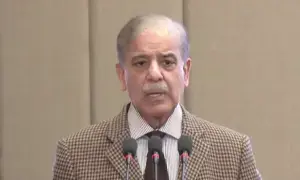Trumponomics may be wrong medicine for US economy today
 —Photo by Reuters
—Photo by ReutersTax cuts, deregulation and more federal spending advocated by the incoming Trump administration, are a classic remedy for economic stagnation and long unemployment lines.
However, that medicine may be too strong for an economy that has grown for eight years, with wages now rising and the jobless rate near what many economists consider "full" employment.
A Reuters analysis of regional jobs data and historic trends suggests that stimulus could boost demand for workers in areas where labour is already tight. That in turn, could stoke inflation, force the Federal Reserve to raise rates faster than expected, and make recession a greater threat.
What the country needs now, labour economists and Fed officials say, is small-bore surgery - policies focused on depressed regions in its rural areas and industrial heartland, which fell out of sync with the global economy and emerged as Donald Trump's power base, helping him win the presidency.
"When you think of what Trump is inheriting, it is an economy in which much of the recent crisis has been solved," said Jed Kolko, chief economist for the job site indeed.com.
"The challenges that remain are the ones that are harder to fix," he said, citing as examples the decline of the nation's coal belt or the rise in drug abuse in "middle America's" depressed communities.
Trump takes office on Friday promising to strengthen the middle class and put millions of sidelined workers back to work by spending big on the nation's aging infrastructure, playing tough on trade, and cutting taxes to spur investment.
There is an argument to be made about using a burst of spending to give the economy a jolt after a long spell of tepid growth that has rarely exceeded 2 percent.
Yet Fed officials are increasingly worried that since the US economy is already performing close to its potential, such a growth spurt could lead to labour shortages, unsustainable wage hikes and too much rather than too little inflation.
In the weeks since the November 8 election, the focus of central bankers has shifted from how to parse out gradual rate increases that could sustain unemployment around its current levels, to the risks of growth that comes on too fast. The periods where unemployment has gone too low, without a Fed response, "have ended in some kind of recession," Atlanta Federal Reserve bank president Dennis Lockhart said in Naples, Florida, last week.
Uncertainty as to how far the jobless rate can drop could make the central bank wait for too long or slam on the brakes too hard, Lockhart said. The current jobless rate of 4.7 percent is roughly in line with what Fed Chair Janet Yellen cited as full employment in remarks this week in which she also mentioned the risk of recession if the Fed had to raise rates too fast..
Trump has dismissed the official jobless figure, saying it overlooks millions of Americans who have stopped looking for work and who he feels could be brought back to the job market with hundreds of billions of dollars in public projects and private investment.
Some economists seem to agree, citing estimates of the number of sidelined workers as evidence the labour market has more slack than the headline numbers might suggest, and that the Fed thus has more policy leeway. Out of about 61 million men in the prime working years between 25 and 54, 88 percent were working or looking for work in 2015 compared with 94 percent in 1978. That means there would be over two million more men in the labor pool today if their participation held at an average rate for that entire period.
However, a Reuters analysis of state-level employment data suggests there may be industry- or region-specific reasons why that army cannot be readily mobilised. Past economic cycles also suggest even keeping the jobless rate where it is will be a challenge. Jobs data show deep regional differences, reflecting shifts in industries and populations that a one-size-fits-all strategy is ill-equipped to address.
For example, labour market participation of prime working age men in Iowa has fallen just 2.2 percentage points since 1978; by contrast it tumbled 12 percentage points in Kentucky as a result of the coal industry's decline. Some parts of the country are already struggling with labour shortages, while others remain depressed.
In parts of Florida, entrepreneurs have cited trouble hiring workers because of the rising housing costs. "Teachers, nurses, cannot find places to live," while hotel and restaurant operators are bringing foreign workers on special visas, said Kristi Bartlett, vice president of economic development at the Greater Naples Chamber of Commerce. According to various studies, including one commissioned by the US Treasury Department last year, major infrastructure needs are clustered around big coastal urban areas; an overhaul that targeted the most beneficial projects could make regional disparities even bigger.
Recent history suggests a big spending push or tax cuts this late in the business cycle might in fact bring forward the end of the current expansion. Since the Fed in 1977 was given a "maximum employment" mandate, the jobless rate has fallen below 5 percent for an extended period twice. In the 1990s, when the tech boom and rising productivity helped produce inflation-free economic growth, the unemployment rate stayed low for more than four years.
During the property-driven expansion early this century, unemployment held below 5 percent for 24 months before a wave of mortgage defaults triggered a financial crisis and a recession that put millions out of work. The jobless rate has now been below 5 percent for a year and potential tax cuts and deficit spending may confront the Fed with a similar challenge as it faced in the late 1980s, said Roberto Perli, analyst at Cornerstone Macro and a former Fed economist.
Back then, the Ronald Reagan administration added tax cuts to already strong demand and a high budget deficit; the Fed countered with a faster than expected round of rate increases. A recession followed in 1990. "With the labour market already tight and little resource slack, the Fed would very likely view demand-side fiscal policies as inflationary and would tighten policy faster than markets expect," Perli wrote. -Reuters



















Comments are closed on this story.